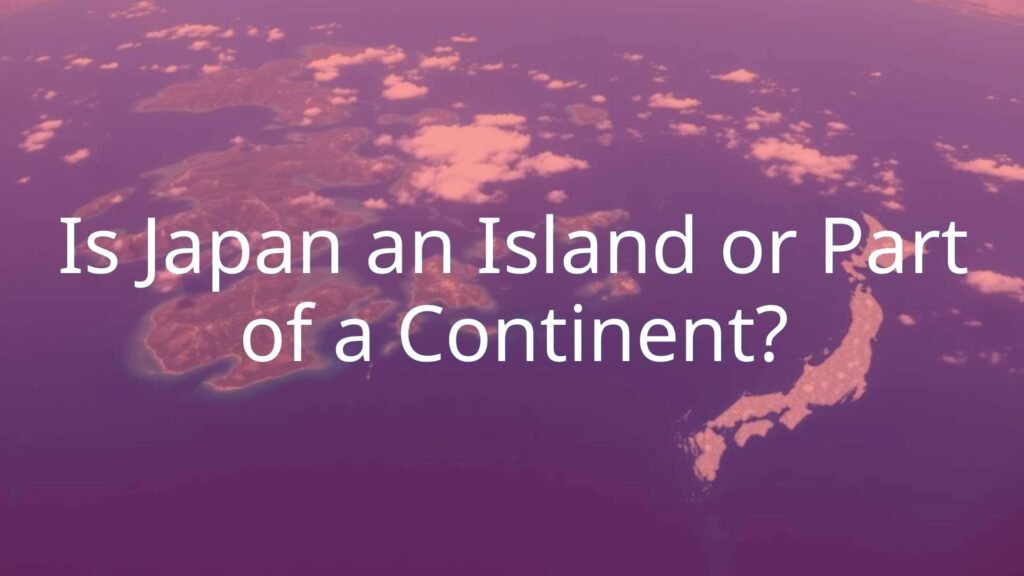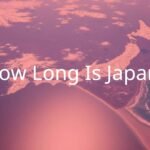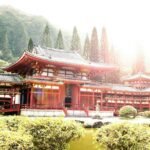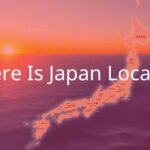Japan is clearly an island country-a large group of islands out in the Pacific Ocean, just off the eastern coast of mainland Asia. Even though it is close to Asia and shares a long history with the region, Japan is separated from the continent by water, which has helped shape its unique culture and way of life.
What Makes an Island Different from a Continent?
To see why Japan is called an island nation, let’s look at what “island” and “continent” mean. An island is a piece of land completely surrounded by water and usually much smaller than a continent. A continent is one of the largest continuous areas of land on Earth, which may also include some nearby islands. Geographers often count islands that sit on the same underwater continental shelf as belonging to that continent. For example, Greenland and the Caribbean islands are grouped with North America because of this.
The continental shelf is the slowly sloping underwater edge of a continent. Some islands are just high points on a continental shelf, but Japan is different. The islands of Japan did not simply break off from Asia’s continental shelf-they were created by powerful movements in the earth’s plates, which pushed and pulled them away from mainland Asia.

Is Japan Part of Asia Geographically?
Japan is the textbook example of an island country. It is made up of about 14,125 islands and stretches over 3,000 kilometers (1,900 miles) along the Pacific coast of East Asia. The main islands-Hokkaido, Honshu, Shikoku, and Kyushu-form a large arc, with Okinawa and thousands of smaller islands dotting the region. These islands are ringed by many bodies of water: the Pacific Ocean lies to the east and south, the Sea of Japan to the west, the Sea of Okhotsk to the north, and the East China Sea to the southwest. Wherever you are in Japan, you are never more than 150 kilometers (93 miles) from the sea, which shows just how much water surrounds these islands.
The sea that divides Japan from Asia-the Sea of Japan-formed because the islands were pulled away from the mainland by tectonic forces around 15 million years ago. Their distance and this deep sea make Japan more than just a piece of Asia’s continent; it’s a group of islands formed by volcanic activity, set apart from the main landmass.

Misunderstandings about Japan’s Geography
Some people may think Japan is connected to Asia like a peninsula, similar to Korea, but this is not the case. There is a wide stretch of ocean-the Sea of Japan-that separates them. The closest spot, from Kyushu to the Korean Peninsula, is about 190 kilometers (120 miles)-almost six times wider than the English Channel between England and France. This wide gap and the deep water underneath show that Japan is clearly an island nation.
Another reason people get confused is because of how much Japan has learned and borrowed from nearby countries, such as China and Korea. Even though these influences are important to Japanese culture, they don’t change the fact that Japan is made up of islands, not physically attached to the Asian continent.
Japan’s Location on the Map
Japan’s place in the world is interesting because it is both close to and separated from the Asian continent. It sits in East Asia, in a zone known for earthquakes and volcanoes, called the Pacific Ring of Fire. This location affects its weather, its land, and its interactions with other countries.
Where Is Japan Compared to Asia?
Japan is just off the east coast of Asia, forming a curved chain that stretches for thousands of kilometers. The closest land neighbor is the Korean Peninsula, followed by China and Russia’s far eastern regions. These nearby countries have influenced Japan’s history, but the oceans between them have also let Japan develop on its own at times.
Japan is spread out from about 20° to 45° north in latitude (from Okinotorishima to Benten-jima) and 122° to 153° east in longitude (from Yonaguni to Minami Torishima). This wide span gives Japan many different climates, from cold in the north to tropical in the south, and results in a large exclusive economic zone (EEZ)-the eighth largest in the world-covering 4,470,000 square kilometers (over 11 times the size of Japan’s land itself).
Which Seas and Oceans Border Japan?
- Sea of Japan (the East Sea): To the west, between Japan and Korea/Russia.
- Sea of Okhotsk: To the north, next to Hokkaido.
- East China Sea: To the southwest, between the Ryukyu Islands and China or Taiwan.
- Pacific Ocean: To the east and south, stretching out into the open ocean.
Japan’s waters are affected by two main currents: the warm Kuroshio current along the Pacific coast, and the cold Oyashio current coming down from the Arctic. Their mix helps marine life thrive and makes Japan one of the best fishing areas in the world.
How Was Japan Formed Geologically?
Japan’s dramatic mountains, volcanoes, and regular earthquakes come from its powerful geological history. Rather than being simply an offshoot of Asia, Japan came about because the earth’s plates pushed and pulled to create the island chain we see today.
Was Japan Ever Connected to the Asian Mainland?
Millions of years ago, Japan was part of Asia’s edge. About 15 million years ago, a process called back-arc spreading pulled Japan away from the mainland, leading to the creation of the Sea of Japan and the Sea of Okhotsk. Sometimes, during ice ages, lower sea levels allowed animals and plants-and perhaps people-to cross land bridges to and from the mainland. For example, about 20,000 years ago, Hokkaido and Sakhalin were connected, as were Kyushu and Korea, but these bridges disappeared when oceans rose again.
Japan’s islands have grown not just by splitting off, but by volcanic activity. The movement of the Pacific Plate and Philippine Sea Plate under the Eurasian Plate has built up a mountainous land, causing regular earthquakes and volcanic activity. About 73% of Japan is covered in mountains, with famous peaks like Mount Fuji (3,776 meters / 12,388 feet).

How Is Japan Linked to Asia?
Even though Japan is separated by sea, it has long and deep relationships with other Asian countries, especially China and Korea. These connections come through history, culture, trade, and politics.
History, Politics, and Culture
Japan’s early history was heavily shaped by neighbors to its west. From as early as 111 AD, Chinese records mention the islands. Much of early Japanese culture, writing, and religious ideas-such as Buddhism-came from both China and Korea. At times, Japan took ideas from outside and made them its own, and at other times, it kept outside influence out, especially during long periods when it closed its borders to most foreign contact (like the Tokugawa shogunate’s Sakoku period from 1641 to 1853).
Is Japan Part of Asia Politically?
Politically, Japan is part of Asia. It is one of the most powerful countries in the region and the world. Japan is the only Asian member of the G7 group of leading industrial nations and takes part in other key international groups, such as the G20, APEC, and “ASEAN Plus Three.” Japan’s network of embassies is one of the largest in the world.
Japan has strong security ties with the United States but works closely with Asian neighbors through trade, diplomacy, and security partnerships, such as the “Free and Open Indo-Pacific” and the Quad security dialogue. Although it has some territorial disagreements with China, Russia, and South Korea, Japan remains deeply involved in Asian affairs.

| Aspect | Details |
|---|---|
| Physical Geography | Archipelago (14,000+ islands), separated by sea from mainland Asia |
| Geological Formation | Created by tectonic activity, not part of Asia’s continental shelf |
| Bodies of Water | Sea of Japan, Sea of Okhotsk, East China Sea, Pacific Ocean |
| Cultural Connection | Influenced by Asia, especially China and Korea, but clearly distinct |
| Political Connection | A key East Asian country, active in international and Asian groups |
Frequently Asked Questions about Japan’s Geography
Can You Walk or Drive from Japan to Mainland Asia?
No, you cannot. Japan consists of islands surrounded by deep water, with no bridges or tunnels linking it directly to Asia. All travel between Japan and countries like Korea, China, or Russia today has to happen by air or ship. Japan has built bridges and tunnels to link its own islands, but none go all the way to the continent.
In the past, when ocean levels were much lower, natural land bridges sometimes existed, but these disappeared thousands of years ago as the seas rose. Because of this natural separation, Japan has never been fully invaded or colonized from the outside, except for its defeat in World War II. This separation has helped Japan shape its own path through history.
- What Is a Maiko? - July 13, 2025
- What Does Domo Arigato Mean? - July 12, 2025
- What Does Naruto Mean? - July 12, 2025









